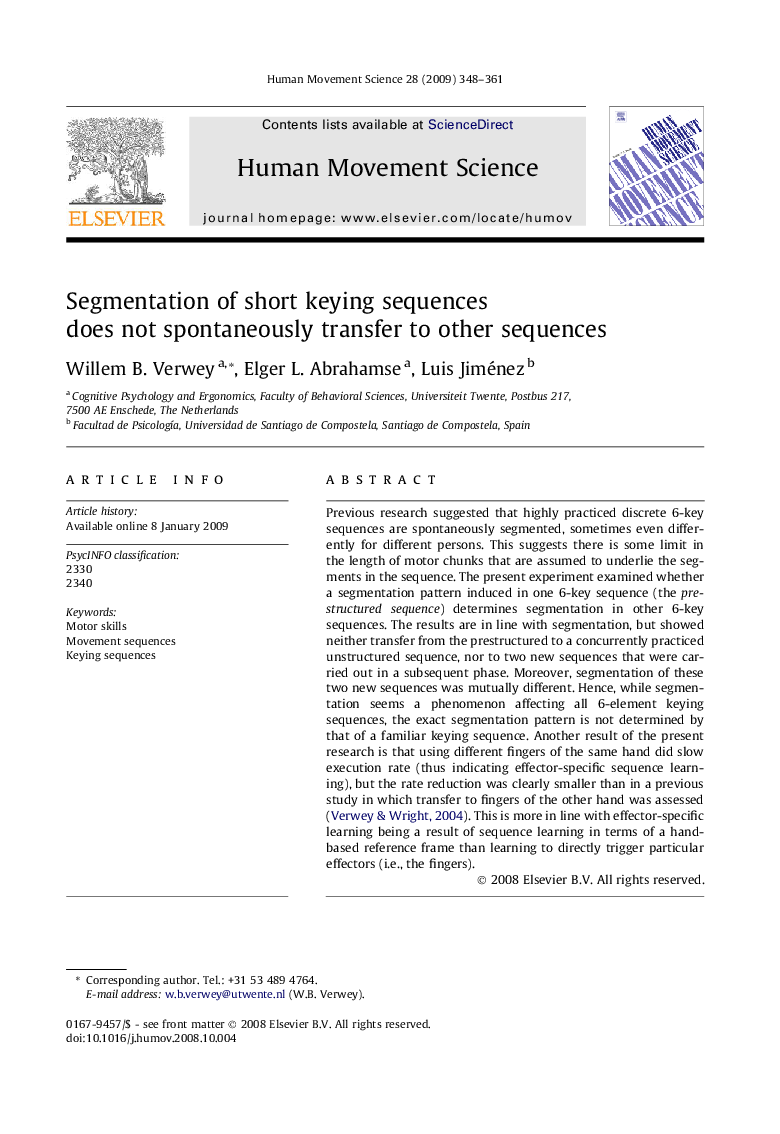| کد مقاله | کد نشریه | سال انتشار | مقاله انگلیسی | نسخه تمام متن |
|---|---|---|---|---|
| 928845 | 922398 | 2009 | 14 صفحه PDF | دانلود رایگان |

Previous research suggested that highly practiced discrete 6-key sequences are spontaneously segmented, sometimes even differently for different persons. This suggests there is some limit in the length of motor chunks that are assumed to underlie the segments in the sequence. The present experiment examined whether a segmentation pattern induced in one 6-key sequence (the prestructured sequence) determines segmentation in other 6-key sequences. The results are in line with segmentation, but showed neither transfer from the prestructured to a concurrently practiced unstructured sequence, nor to two new sequences that were carried out in a subsequent phase. Moreover, segmentation of these two new sequences was mutually different. Hence, while segmentation seems a phenomenon affecting all 6-element keying sequences, the exact segmentation pattern is not determined by that of a familiar keying sequence. Another result of the present research is that using different fingers of the same hand did slow execution rate (thus indicating effector-specific sequence learning), but the rate reduction was clearly smaller than in a previous study in which transfer to fingers of the other hand was assessed ( Verwey & Wright, 2004). This is more in line with effector-specific learning being a result of sequence learning in terms of a hand-based reference frame than learning to directly trigger particular effectors (i.e., the fingers).
Journal: Human Movement Science - Volume 28, Issue 3, June 2009, Pages 348–361